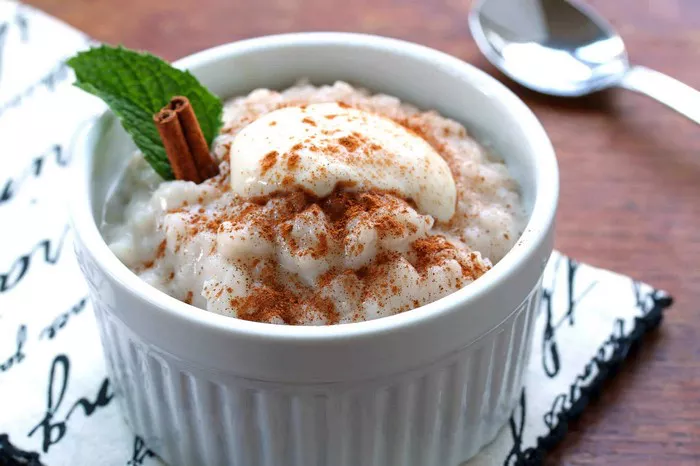Close your eyes and imagine a creamy, comforting bowl of rice pudding, infused with fragrant vanilla and delicate spices. This classic dessert has been cherished for generations, loved for its simplicity and versatility. But when it comes to making rice pudding, the choice of rice is paramount.
In this culinary journey, we’ll explore the world of rice varieties and uncover the secrets to selecting the best rice for creating a pudding that’s creamy, tender, and utterly irresistible.
Understanding Rice Varieties:
Rice is a staple food enjoyed by cultures around the world, with thousands of varieties available, each boasting its own unique characteristics and culinary uses. From long-grain to short-grain, aromatic to non-aromatic, rice comes in a multitude of shapes, sizes, and flavors. Some varieties are prized for their fluffy texture and mild flavor, while others are revered for their creamy consistency and nutty aroma.
By understanding the nuances of different rice varieties, we can make informed choices when selecting the perfect rice for our pudding creations.
The Role of Rice in Pudding Making:
Rice is the star ingredient in rice pudding, providing the foundation for its creamy, velvety texture. The type of rice used greatly influences the final texture and consistency of the pudding. While any type of rice can technically be used in pudding making, certain varieties are better suited for achieving that quintessential creamy texture that we all crave in a good rice pudding.
Top Contenders for Rice Pudding:
1. Arborio Rice:
Arborio rice is a short-grain variety that is traditionally used in Italian risotto.
Known for its high starch content, Arborio rice releases starch gradually during cooking, resulting in a creamy, velvety texture. This makes it an excellent choice for rice pudding, as it creates a rich, custard-like consistency that is both comforting and indulgent.
2. Carnaroli Rice:
Similar to Arborio rice, Carnaroli rice is another Italian short-grain variety prized for its creamy texture and ability to absorb flavors.
With its firm, plump grains and high starch content, Carnaroli rice holds its shape well during cooking, producing a pudding that is both creamy and slightly chewy. Its robust flavor makes it a popular choice for savory dishes as well as desserts like rice pudding.
3. Jasmine Rice:
Jasmine rice is a long-grain variety known for its delicate aroma and slightly sticky texture when cooked.
While not traditionally used in rice pudding, Jasmine rice can be a delicious alternative, offering a light, fluffy texture and subtle floral notes that complement the sweetness of the pudding.
Just be sure to rinse the rice before cooking to remove excess starch and prevent the pudding from becoming too gummy.
4. Basmati Rice:
Basmati rice is another long-grain variety prized for its fragrant aroma and fluffy texture.
While it is more commonly associated with savory dishes like biryani and pilaf, Basmati rice can also be used to make a deliciously light and aromatic rice pudding. Its delicate flavor and long, slender grains create a pudding that is both elegant and flavorful, perfect for serving as a light dessert or breakfast treat.
Experimenting with Flavor and Texture:
While the varieties mentioned above are favored for their exceptional qualities in rice pudding, don’t be afraid to experiment with different combinations of rice to create a pudding that suits your personal taste preferences.
Mixing and matching rice varieties with varying textures and flavors can result in a pudding that’s uniquely your own, with layers of complexity and depth.
Whether you prefer the creamy richness of Arborio rice or the fragrant aroma of Basmati, there’s no wrong choice when it comes to crafting the perfect rice pudding.
Tips for Pudding Success:
When selecting rice for rice pudding, keep the following tips in mind to ensure a successful pudding-making experience:
1. Choose a rice variety with a high starch content, such as Arborio or Carnaroli, for the creamiest texture.
2. Rinse the rice before cooking to remove excess starch and prevent the pudding from becoming too thick or gummy.
3. Use a heavy-bottomed saucepan and low heat to cook the pudding slowly, allowing the rice to absorb the liquid gradually and develop a creamy consistency.
4. Stir the pudding frequently during cooking to prevent it from sticking to the bottom of the pan and ensure even cooking.
5. Experiment with different flavorings and mix-ins, such as vanilla, cinnamon, and raisins, to customize the pudding to your taste preferences.
Conclusion
While a variety of rice varieties can be used, certain varieties are favored for their exceptional texture, flavor, and cooking properties. Whether you prefer the creamy richness of Arborio rice or the delicate aroma of Basmati, there’s a rice out there to suit every taste and occasion. So go ahead, gather your ingredients, and embark on your own flavorful journey to rice pudding bliss!






















